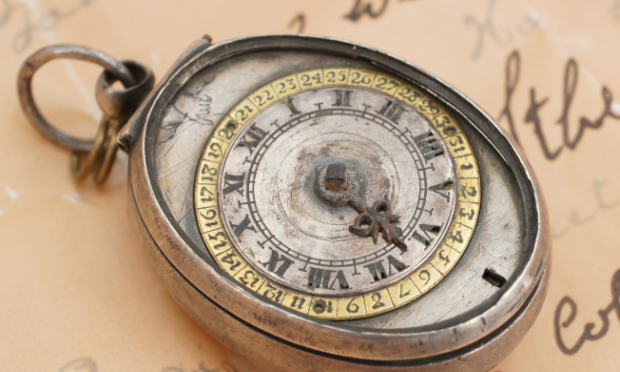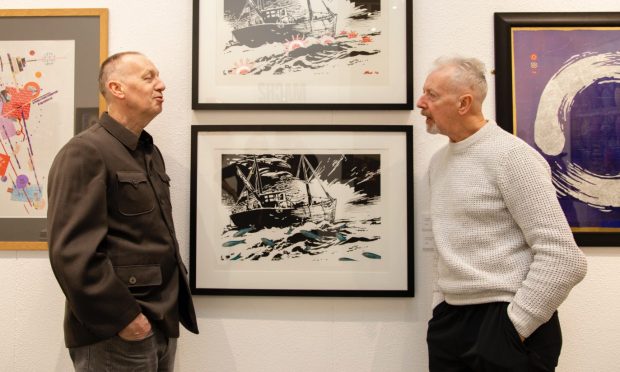I recall writing 70,000 words or so on the little-known Elizabeth Cromwell, Oliver’s wife of over 30 years, who was officially titled Her Highness the Lady Protectress when her husband became head of state in 1653.
During my research, I traipsed up and down King Street in London’s Westminster to find Oliver’s one-time lodgings, where Elizabeth once hosted the Parliamentary Army’s grandees. It was probably an elegant town house on a site now occupied by the north-west corner of Parliament Square, but no trace of it survives.
So to Laidlaw Auctions of Carlisle and a rare mid-17th Century Puritan fob watch said to have once belonged to Oliver Cromwell, which sold earlier this month for £15,000.
The 400-year-old, silver-cased, oval watch was signed ‘William Clay fecit’ and its circular face had a single steel hand with Roman numerals within an outer calendar ring.
Accompanying the watch was a 1914 receipt from the Somersetshire Archaeological Society for “a watch given by Cromwell to Colonel Bagwell at the siege of Clonmel.”
Moreover, the December 1808 issue of the Gentleman’s Magazine included engravings of this watch and the text, ‘Mr Urban, I send you views of a Watch formerly belonging to Oliver Cromwell, which he took out of his fob at the siege of Clonmel, and presented to the ancestor of the present Colonel Bagwell, whose it now is. The name of the maker, William Clay, is engraved on the work within-side.’
William Clay is recorded as a watchmaker at King Street, London between 1646 and 1670. Although unmentioned in its auction provenance, it seems to me that Oliver, while living in the same street at the same time, might well have popped next door to treat himself to a new timepiece.
Picture: 17th Century watch, £15,000 (Laidlaw Auctions).










